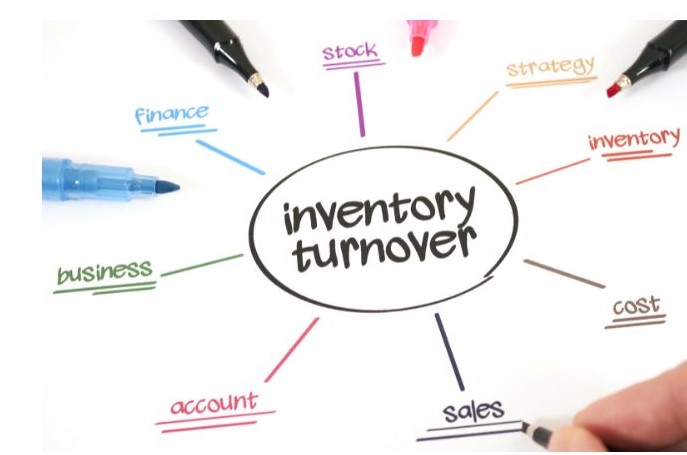

Inventory Turnover and Seasonal Trends: Adapting Your Strategy
In the dynamic landscape of third-party platform selling, mastering inventory turnover and adapting to seasonal trends is a strategic imperative. Efficiently managing your inventory and aligning your selling strategy with seasonal shifts can make the difference between success and stagnation. In this comprehensive guide, we’ll explore insights and tactics to help third-party platform sellers navigate inventory turnover, understand seasonal trends, and adapt their strategies for sustained success on popular e-commerce platforms.
Understanding Inventory Turnover in Third-Party Selling
Inventory turnover is a key metric that reflects how quickly products move through your online store. It’s calculated by dividing the cost of goods sold (COGS) by the average inventory during a specific period. A high inventory turnover indicates efficient sales, while a low turnover suggests slow-moving inventory.
**Regularly Assess Product Performance:**
– Evaluate the performance of each product in your inventory.
– Identify slow-moving items and consider discounting or bundling them.
**Implement the ABC Analysis:**
– Categorize products into A, B, and C groups based on sales volume.
– Focus on optimizing inventory management for high-priority items.
**Utilize Demand Forecasting:**
– Leverage historical sales data and market trends for demand forecasting.
– Anticipate product demand to align inventory levels accordingly.
**Optimize Order Quantity:**
– Determine optimal order quantities to balance supply and demand.
– Avoid overstocking or understocking by refining your ordering strategy.
**Embrace Just-In-Time (JIT) Inventory:**
– Implement JIT inventory practices to reduce holding costs.
– Ensure timely restocking to meet customer demand without excess inventory.
**Offer Limited-Time Promotions:**
– Introduce flash sales or limited-time promotions to boost sales.
– Clear out excess inventory and create a sense of urgency among buyers.
GET EXCLUSIVE ACCESS TO OUR EXPERTS THIRD PARTY PLATFORM SELLERS' TIPS AND ADVICE:
- Get AHEAD of the Competition.
- FREE Membership to Sarah’s Weekly Insiders secrets.
- FREE tailored resources and gifts.
- PLUS qualify to receive personal email support.

* We respect your privacy. We will not spam you.
**Explore Dropshipping Opportunities:**
– Consider dropshipping for certain products to minimize inventory risks.
– Collaborate with reliable suppliers to fulfill orders directly to customers.
**Optimize Product Bundling:**
– Bundle complementary products to encourage larger purchases.
– Enhance perceived value and reduce inventory by creating attractive bundles.
**Collaborate with Third-Party Logistics (3PL) Providers:**
– Partner with 3PL providers for efficient order fulfillment.
– Offload storage and shipping responsibilities to focus on core business activities.
**Implement Dynamic Pricing:**
– Adjust prices dynamically based on demand and inventory levels.
– Use pricing strategies to incentivize purchases during slow periods.
Navigating Seasonal Trends in E-Commerce
Understanding and adapting to seasonal trends is essential for third-party platform sellers. Consumer behavior, purchasing patterns, and product demand can vary significantly throughout the year. Here’s how to navigate seasonal shifts successfully:
**1. Analyze Historical Data:**
– Review past sales data to identify seasonal patterns.
– Understand which products experience increased demand during specific times.
**2. Plan Inventory According to Seasons:**
– Align your inventory levels with anticipated seasonal demand.
– Stock up on popular products ahead of peak seasons.
**3. Create Seasonal Marketing Campaigns:**
– Develop targeted marketing campaigns for each season.
– Highlight seasonal products and promotions to attract buyers.
**4. Diversify Product Offerings:**
– Introduce seasonal or holiday-specific products to diversify your catalog.
– Cater to the preferences and needs of customers during different seasons.
**5. Monitor Competitor Activity:**
– Keep an eye on competitors’ seasonal strategies and promotions.
– Identify opportunities to differentiate your offerings or offer unique promotions.
**6. Leverage Pre-Season Sales:**
– Capitalize on pre-season sales to generate early interest.
– Offer exclusive deals to incentivize customers to shop before peak demand.
**7. Optimize Inventory Allocation:**
– Allocate inventory strategically based on geographic and climate considerations.
– Adjust stock levels for products with regional seasonal variations.
**8. Plan for Off-Peak Periods:**
– Develop strategies to maintain sales during off-peak seasons.
– Consider offering promotions, bundles, or exclusive products to stimulate demand.
**9. Enhance Customer Engagement:**
– Engage customers through targeted content and promotions.
– Build anticipation for upcoming seasons and product launches.
**10. Monitor and Adjust in Real-Time:**
– Regularly monitor sales and adjust inventory levels in real-time.
– Use analytics tools to identify emerging trends and opportunities.
Adapting Your Strategy for Success
Navigating inventory turnover and seasonal trends is an ongoing process that requires flexibility and strategic adaptation. By implementing these insights and strategies, third-party platform sellers can optimize their inventory management, align with seasonal shifts, and position themselves for sustained success in the competitive world of e-commerce. Remember to leverage data analytics, stay informed about industry trends, and continually refine your approach based on customer behavior and market dynamics. As you master the art of efficient inventory turnover and adapt to seasonal trends, you’ll not only enhance customer satisfaction but also maximize your potential for growth and profitability on third-party platforms
RELATED ARTICLES FOR THIRD PARTY PLATFORM PRODUCT SOURCING & MANAGEMENT
Bringing you the latest information, ideas, products and services for your E-commerce business.
Copyright 2024 E-Market Pulse
Contact Us
We may receive compensation from partners listed through affiliate partnerships, at no cost to you. This doesn’t influence our ratings, and the opinions are our own
Subscribe to our Newsletter
Get updates on products and services specially targeted to help you succeed.
